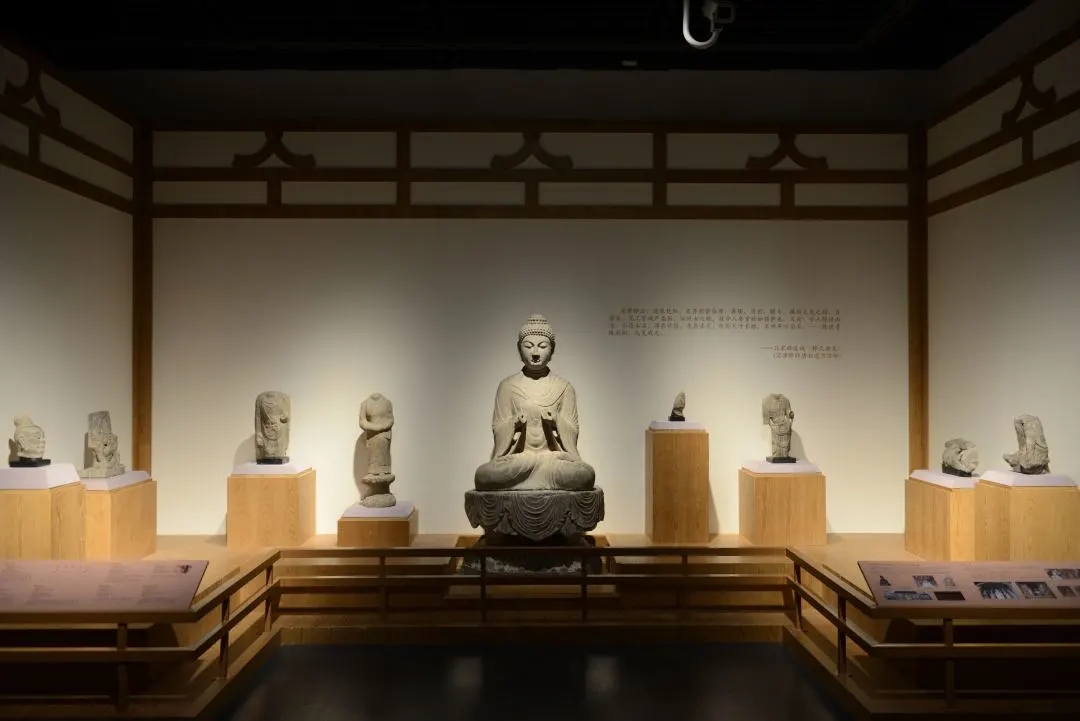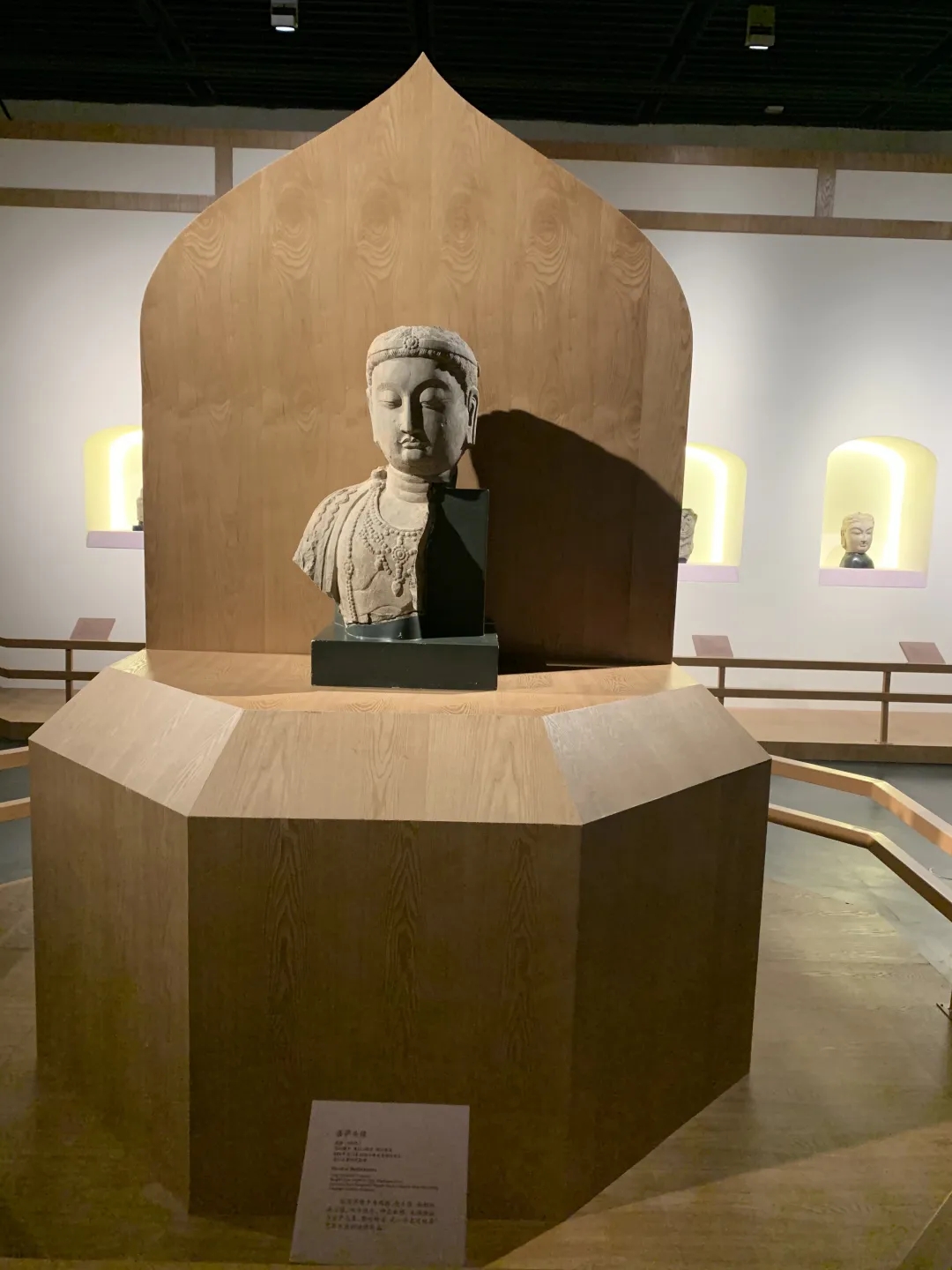Awe-inspiring Longmen relics dazzle in town
Writer: Cao Zhen | Editor: Vincent Lin | From: Shenzhen Daily | Updated: 2021-01-05
A total of 76 pieces/sets of relics from Longmen Grottoes in Luoyang, Henan Province are on display at the “Sacred Pulchritude Beyond the River: Enshrinement From the Wei and Tang Dynasties in Luoyang Longmen Grottoes” exhibition in Shenzhen. Visitors are required to book in advance on the Shenzhen Museum’s WeChat account “iszbwg.”
Longmen Grottoes is the largest stone-carving art treasury and contains the world’s largest collection of Buddhist statues. It also can be considered as the finest representative of the imperial grottoes art during the Northern Wei (386-534) and Tang (618-907) dynasties. Alongside the Yi River, the cliff walls studded with grottoes stretch for up to one kilometer, and there are currently more than 2,300 niches, 110,000 statues and 2,860 steles with inscriptions.

An array of statues in the “Sacred Pulchritude Beyond the River: Enshrinement From the Wei and Tang Dynasties in Luoyang Longmen Grottoes” exhibition. Photos from the museum's WeChat account
Longmen Grottoes also showcases the cultural communication between China and the world since ancient Indian, Korean and Siberian niches, Central Asian designs and ancient Greek-style pillars can be found there. It is fair to say that Longmen Grottoes witnessed ancient China’s development in politics, economics, religion, culture and art. In 2000, the UNESCO added Longmen Grottoes to the World Heritage List.
The construction of Longmen Grottoes began during the period when Emperor Xiaowen of the Northern Wei Dynasty moved the capital to Luoyang and his reform policies were implemented. In the following 1,400 years, various dynasties continued expanding it, whose patrons and donors included emperors, such as Wu Zetian, aristocrats, generals, rich people and religious groups. Those built during the Northern Wei account for 30 percent, the Tang Dynasty 60 percent and other dynasties 10 percent of the Longmen Grottoes. It is one of the four greatest grottoes in China, together with the Mogao Caves and the Maiji Mountain Grottoes in Gansu Province and the Yungang Grottoes in Shanxi Province.

A head of Bodhisattva from the Tang Dynasty (618-907) on display in the exhibition.
At the exhibition, which is co-organized by the Shenzhen Museum and the Longmen Grottoes Academy, visitors can admire not only finely crafted Buddhist statues and heads, but also four 3D-printed niches of the Guyang Cave, which clearly presents the vast and delicate carving details. The Guyang Cave is among the earliest caves built in the late fifth and early sixth centuries.
In the first half of the 20th century, foreign explorers and archaeologists damaged the Longmen Grottoes and stole countless statues, heads and steles. According to the exhibition profile, more than 200 pieces of Longmen relics are now housed in public museums and private organizations in Japan, the United States and Europe. Since 2001 when the National Gallery of Canada returned the Arhat Kashyapa Statue to China, more of the robbed Longmen relics have been returned to China. At the exhibition, there’s a special section showcasing some of these relics, including the Arhat Kashyapa Statue that was made in the early Tang Dynasty.
Since all the existing statues’ colors have faded over time, a 3D-printed restoration of a colorful Avalokitesvara statue gives visitors a clear impression of what the original one looked like. The head of the statue built in the Tang Dynasty is damaged but its body figure is slender and graceful, which is praised by archaeologists as the “most beautiful Avalokitesvara statue in Longmen.”
The Shenzhen Museum has recently launched an audio channel on the Himalaya app to provide visitors access to exhibition information, expert guidance and interviews.
Dates: Until May 23
Hours: 10 a.m.-6 p.m., closed Mondays
Venue: Shenzhen Museum, Zone A, Civic Center, Futian District (福田区市民中心A区深圳博物馆)
Metro: Line 2 or 4 to Civic Center Station (市民中心站), Exit B